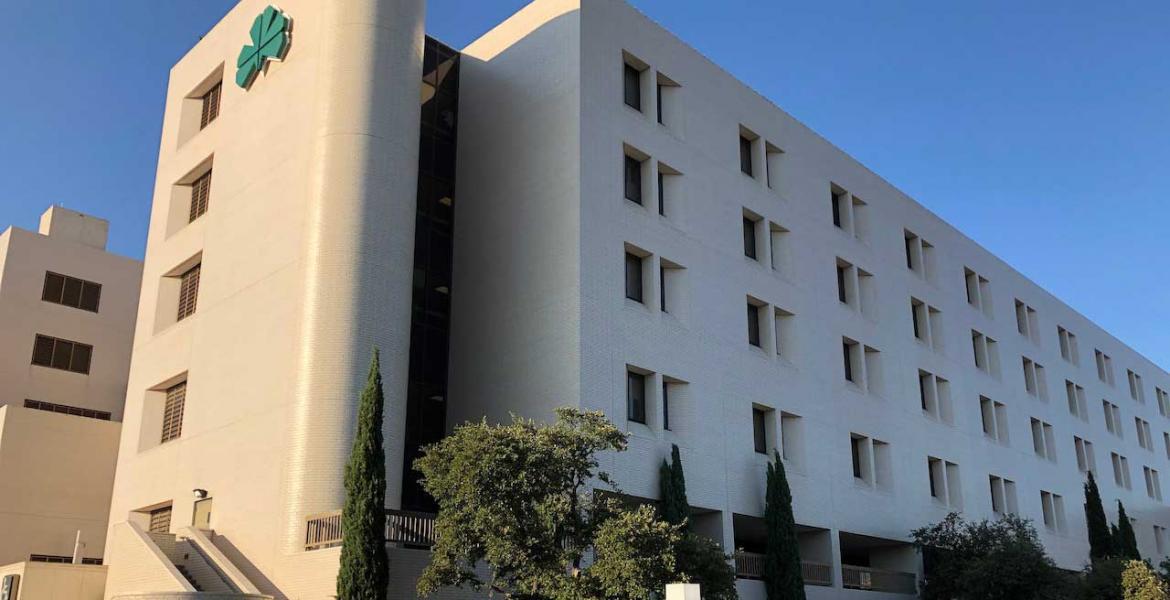SAN ANGELO, TX — “The legislation that allows Shannon to buy out Community gives Shannon total immunity to do whatever it wants,” explained Irving attorney Paul Craig Laird. He is representing two doctors locked in legal battles with San Angelo Community Medical Center. If Shannon Health’s buyout goes through, like everyone expects it will, the dispositions of Laird’s clients’ lawsuits are unclear. He has incentive to view askance Shannon’s asset purchase of SACMC, but he and one of his clients were the only two who would speak on the record about the acquisition's downsides for San Angelo's healthcare consumers.
Shannon Health, that operates the largest hospital in the San Angelo region, has its asset purchase of its only regional competitor, San Angelo Community Medical Center, before the Texas Attorney General and the Texas Department of Health and Human Services for final approval likely by the end of September. That approval comes in the form of a Certificate of Public Advantage, or COPA, awarded by the State of Texas.
San Angelo has enjoyed the benefits of two competing hospitals for years. SACMC was originally founded by a physician, Dr. H.P Rush, who moved here from De Leon in 1920. His clinic attracted others and eventually an eight-bed hospital was established at 224 W. Beauregard Ave. In 1970, the hospital was sold to a non-profit and renamed Clinic Hospital. By 1977, the hospital moved into its current location at 3501 Knickerbocker Rd. and was renamed Angelo Community Hospital. In 1995, the hospital was sold to a for-profit corporation and the proceeds, all $44 million of it, were used to establish the San Angelo Health Foundation. The hospital was renamed once more to San Angelo Community Medical Center.
The two medical centers were at loggerheads for decades. SACMC prided itself on specialized medicine. It dedicated an entire floor to rapid-recovery knee and hip replacements, for example. It also built a state-of-the-art cath lab for its cardiology department. Whether you needed elective surgery or state-of-the-art cardiology procedures, SACMC positioned itself as an excellent hospital for the well-insured. Meanwhile, Shannon Medical Center maintained its mission for providing healthcare to all, regardless of ability to pay.
Shannon was established with a gift by ranchers J.M. Shannon and his wife Margaret. Before Margaret Shannon died in 1931, she established a foundation using a portion of her family’s fortune that established the Shannon West Texas Memorial Hospital that today is known as Shannon Health System. The most important gift to Tom Green County residents from the Shannons, however, was that there has never been a hospital district taxing entity here like there is in many other Texas counties.
The healthcare industry shifted away from SACMC’s model over the past 15 years or so, while Shannon aggressively expanded its offerings, working itself into many of the profit centers long enjoyed by SACMC, and doing so as a non-profit medical center with all of the tax benefits that entails. Meanwhile, federal healthcare policy brought forth the Affordable Care Act, also known as Obamacare, that made subsidized medicine available to more patients.
Obamacare, however, has not created a favorable market environment for for-profit hospitals, especially in rural communities.
Community Health Systems (NYSE - CYH), the parent for SACMC, has been trading in the $2 to $6 per share range over the past year while the corporation is divesting itself of hospitals. In its Q2 2020 report, Community Health Systems Chairman and CEO Wayne T. Smith stated that in FY 2020, three hospitals in Florida and one in Louisiana have been sold. It is currently working on selling hospitals in Texas, of which SACMC, Abilene Regional Medical Center and the Brownwood hospital are among four. By selling their least profitable hospitals like those in west Texas, Community Health Systems is increasing its net profits, or EBITA, for shareholders.
As the market shifted and Community Health Systems was adjusting — and divesting less profitable hospitals — State Rep. Drew Darby and State Senator Charles Perry felt a heightened concern about the sustainability of rural hospitals. Both politicians represent vast areas of rural west Texas. While the Dallas/Fort Worth metropolitan area has at least four major hospitals, like UT Southwestern, Baylor’s Scott and White, Methodist, and Texas Health Resources, San Angelo and Abilene have two each.
“Over the past 10 years, 20 rural hospitals have closed, depriving those areas of vital health care services,” Darby said in an interview. “There are 26 counties in Texas where you cannot deliver a baby and it’s an accelerating trend.”
Darby and Perry sponsored legislation to allow one rural hospital to merge with another without an antitrust civil liability in the Texas statutes should one hospital become the monopoly hospital in the county. According to Darby, the legislation targets seven counties by requiring very specific qualifications. For example, in Shannon’s case, the law allows a merger agreement among hospitals, if each are located within the same county that has a population of more than 100,000 and less than 150,000 “and is not adjacent to a county with a population of 100,000 or more.”
By putting into place state regulatory approval and active supervision, the law intends to “supplant” state and federal antitrust laws. The legal idea is to create a barrier where an aggrieved party would have to run through the State court system, likely from state district court all the way to the Texas Supreme Court, before the case is heard in a federal court. The barrier is the legal costs for any plaintiff suing Shannon Health under antitrust after its acquisition of SACMC.
Attorney Laird said the law effectively exempts Shannon from any civil liability of being a monopoly.
“If Shannon wants to be the only pharmacy in the region, it could put CVS and Walgreen’s or even Walmart out of the pharmacy business with the State’s blessing,” Laird said. Likewise, Shannon could gobble up the long-term living market here, and be the sole-source nursing home provider if it wanted. But closer to Shannon’s core business, the merger will likely mean the end of private practice of an independent doctor in San Angelo or any of the 25 counties Shannon serves.
“Shannon and only Shannon will control the hospitals and privileges in its operating rooms,” said Dr. Steve Montoya, a retired SACMC doctor. Among the benefits of having “hospital privileges” for a doctor are having other doctors with similar privileges cover shifts for their colleagues’ vacation time and presumably a doctor on call at a hospital will gain referrals to build that doctor’s practice.
[[{"fid":"24281","view_mode":"default","fields":{"format":"default","field_file_image_alt_text[und][0][value]":"San Angelo Community Medical Center on Knickerbocker Road in San Angelo, TX. (LIVE! Photo/Joe Hyde)","field_file_image_title_text[und][0][value]":"San Angelo Community Medical Center on Knickerbocker Road in San Angelo, TX. (LIVE! Photo/Joe Hyde)"},"type":"media","field_deltas":{"3":{"format":"default","field_file_image_alt_text[und][0][value]":"San Angelo Community Medical Center on Knickerbocker Road in San Angelo, TX. (LIVE! Photo/Joe Hyde)","field_file_image_title_text[und][0][value]":"San Angelo Community Medical Center on Knickerbocker Road in San Angelo, TX. (LIVE! Photo/Joe Hyde)"}},"attributes":{"alt":"San Angelo Community Medical Center on Knickerbocker Road in San Angelo, TX. (LIVE! Photo/Joe Hyde)","title":"San Angelo Community Medical Center on Knickerbocker Road in San Angelo, TX. (LIVE! Photo/Joe Hyde)","class":"media-element file-default","data-delta":"3"}}]]
Above: San Angelo Community Medical Center on Knickerbocker Road in San Angelo, TX. (LIVE! Photo/Joe Hyde)
“Do you think Shannon wants to refer a post-ER patient to an independent doc?” Montoya asked. Shannon Health has the capacity and talent to handle almost every medical specialty. After the merger, the only way a doctor will be able to practice medicine profitably will be as an employee of Shannon Health, he said. “No independents will have hospital privileges.”
Rep. Darby counters that Shannon will be constrained in how it operates by the State supervision and the terms and conditions of its COPA. Shannon's COPA application does not address how Shannon will treat independent doctors, however. And Montoya, who has spent his fortune in legal battles with SACMC, argued there is no independent doctor rich enough to fight a case against a Shannon monopoly in front of state agencies and multiple levels of State and federal courts as the new law demands.
What will be left for the medical consumer in the San Angelo region?
“If the State passed a law that gave Stripe’s the sole right — the monopoly — to sell gas in the region, what do you think will happen to the price of gas for motorists here?” Montoya asked.
We asked Shannon Health about the career prospects staff and physicians currently working at SACMC post-acquisition, among other issues. Here are the questions and answers:
Q: What will become of the doctors with SACMC operating room credentials? Three SACMC docs have expressed concern they will eventually lose hospital privileges after the acquisition and be required to move away from San Angelo (described as a “mass exodus of docs”). Other SACMC-affiliated docs likely fear this, but are fearful of expressing those concerns. State Rep. Drew Darby expressed his opinion that the acquisition will make health care more available, yet the COPA alludes to economies of scale. Economies of scale points towards doing more with less. These SACMC doctors stand no chance of having hospital privileges into the future, do they?
A: Through the proposed acquisition of San Angelo Community Medical Center, we have the opportunity to protect healthcare and local healthcare decision-making in our community. It is our desire to expand—not reduce—service offerings to ensure West Texans have access to highest quality healthcare for generations to come.
The physicians on the medical staff of SACMC will become members of the medical staff of Shannon immediately upon completion of the acquisition. We will continue to provide services at both campuses as San Angelo Community Medical Center and Community Medical Associates will be a part of the new Shannon South Campus. There are nearly 300,000 people across 25 counties in our region who count on all of us for their healthcare. We look forward to welcoming San Angelo Community Medical Center, its employees, physicians and patients into the Shannon family as we work together to meet the needs of this region.
Q: Will the acquisition reduce in-network health insurance options for west central Texas residents in areas served by Shannon? The argument against the COPA is that Shannon doesn’t recognize Blue Cross/Blue Shield of Texas HMO, only PPO and SACMC recognizes BCBS HMO but not PPO. Also, City of San Angelo self-insurance managers made a deal with SACMC not Shannon for (I presume) cost reasons. When the CIty goes back to negotiate health care for its self-insurance plan, there will be no competition, so how are the taxpayers assured they are going to get a good deal?
A: There will be no changes in either organization as we go through regulatory approval. Once we complete this process, Shannon intends to honor all existing insurance plans and patients can receive care at either facility. This will expand options for many in our community.
One benefit of a COPA is that it protects the interests of the community and ensures the cost of care remains affordable for local employers and patients. The state is required to actively supervise the merged entity after the COPA is granted, providing an enforceable commitment to future healthcare that benefits our community’s employers, patients, and payers.
Q: Please address the county jail health care arrangement — its costs, benefits, etc.
A: Shannon has a long-standing partnership with the county. That will not change.
Q: Defend Shannon’s use of non-profit status to receive property tax exemptions. If the majority of the regional health care industry is sitting on tax-exempt land as the acquisition will accomplish, removing SACMC property from tax rolls, it places pressure on primarily residential property owners to make up the difference in revenues to the cities, counties, ISDs.
A: Shannon is committed to providing high-quality healthcare services for individuals and families throughout west Texas. Through the proposed acquisition, Shannon will be able to make an even bigger impact in addressing the most significant health issues facing our region including heart disease, diabetes, and cancer. Together, we can invest in quality care for patients, new technology and our local workforce.
As a not-for-profit organization, Shannon must ensure the benefits we provide to the community outweigh any tax exemption. It is our privilege and commitment to do so. In 2018, Shannon provided $53 million in benefit to our community, which included $17.2 million in actual charity care costs. It is important to note that not all of Shannon’s operations are tax exempt.
For example, the soon-to-be-built rehabilitation hospital will be a tax paying entity. In addition, the Shannon Trust recently purchased the former Neighbors ER building. It will be leased to another entity and will remain on the tax roll.
Q: If this acquisition didn’t occur, what would happen to SACMC? Would CHS continue to operate CMA, SACMC, or close the entities down, or something in-between?
A: We are unable to comment on what CHS’s alternative plans would be. What we can share is that we are committed to this process, and both organizations are working in good faith with each other and the State of Texas to achieve the benefits we believe will result from the proposed acquisition.
The proposed acquisition will improve care for everyone in West Texas. We think that is something everyone can support.
Q: Are there any plans for Shannon to compete with Hendrick in outlying areas towards Taylor County, or has Hendrick and Shannon divided up the region similar to a horizontal market allocation agreement (or handshake) of the region?
A: Our mission is to provide care locally so that people in our 25-county region do not have to travel to large cities, like Dallas and Austin, for care. We continue to grow our medical specialties and technology, bringing in needed services and procedures. We also continue to partner with other rural healthcare entities so they can also provide as much care locally in their communities. Our focus will be on improving the patient experience and providing greater access for our family, friends and neighbors in our primary service area.
In Conclusion
According to filings accompanying Shannon Health’s COPA, who’s who in the San Angelo region supports Shannon’s asset purchase of SACMC. Supporters of Shannon's COPA application who wrote letters to the State regulators include Cheryl Sparks, president of Howard College; Gregory Rowe, executive director of MHMR of the Concho Valley; County Judge Steve Floyd and the Tom Green County Commissioners’ Court; McCulloch County Judge Bill Spiller; Justin Jonas, Executive Director of the San Angelo Stock Show and Rodeo; Dr. Alan C. Hardwicke, MD, chief of staff on the Ballinger Memorial Hospital District; Dr. Marc Wimpee, MD, CMO of La Esperanza Clinic; Marcus Sims, DO, medical director of the Family Health Center of Ozona; Crockett County Judge Fred Deaton; Tim Jones, CEO/board member of Brady’s Heart of Texas Healthcare System; AJ Moore, CEO of the YMCA of San Angelo; Angie Wright, interim president of Angelo State University; J. Bryan Vincent, Ph.D. and CEO of Principal LED; Dusty McCoy, executive director of the West Texas Counseling and Guidance Center; Fred Key, CEO of Foster Communications; Matt Lewis, executive director if the San Angelo Area Foundation; Aaron Hargett, executive director of the Baptist Memorial Retirement Community; Eric Sanchez, CEO, Alcohol & Drug Abuse Council for the Concho Valley; Paul Burke, administrator of the Schleicher County Medical Center; Dr. David Jolivet, MD, director of medical services at the San Angelo State Supported Living Center; Brenda Gunter, mayor of San Angelo; Tom Thompson, San Angelo City Council SMD 2; and several Shannon doctors and one SACMC doctor.
The only letter written to the Texas Heath and Human Service Commission arguing against Shannon’s acquisition of SACMC was Dr. Steve Montoya, who was mentioned earlier. He is a retired nephrologist who worked at SACMC. His civil lawsuit against SACMC where he alleges SACMC stole his patients was set to go to a jury trial in March and but delayed because of the COVID-19 shutdown. Paul Craig Laird is his attorney.
Montoya’s primary request was for the Texas Attorney General to hold public hearings before the COPA is approved. Other doctors to whom we talked, all of them at SACMC, would not go on the record out of fear of retribution. The forces aligned to see the acquisition through are powerful, Montoya explained.
Rep. Darby stressed that his legislation provided a tool for two voluntary participants, Shannon and SACMC, to make a deal with State regulatory safeguards in place. He said of the deal he was hopeful the combined hospitals under one owner will “provide increased access to affordable health care” and that he wants to see Shannon have greater capability to expand services into rural communities after the acquisition.
Since Shannon Health is a non-profit entity, the acquisition will remove a portion of the highest-appraised property values in the city from the tax rolls. According to the Tom Green County Appraisal District, the land, hospital building and property at 3501 Knickerbocker Road is valued at approximately $18 million.
Dr. Montoya, SACMC, and Shannon Health are advertisers with San Angelo LIVE!
Subscribe to the LIVE! Daily
Required






Comments
Listed By: J. L.
This was a terrible idea to begin with. We need two hospitals not owned by the same people. Since Shannon does not currently take the HMO's they better get signed up as all the one who go to SAMC may have to go there because of insurance. DO NOT LEAVE THEM WITHOUT HEALTH CARE! Second of all Shannon needs a patient advocate that goes to all the floors and all patient rooms to see what care they are getting and what complaints they might have which needs to be a person that does not intimidate the patient. Shannon would find out real quick how some of the patient care sucks. I know there a the survey sent in as I am the one who mailed it for someone with numerous complaints. Never heard a word and even ask them to call. On two of the hospital stays it seems the nurses either don't not have time and cannot read doctors orders to do them. My husband was there for 5 days and not even once did they come in to get him up and help him with a shower after surgery. Pathetic .The only thing that is going to happen here is less care, less time with a doctor, and doctors will get paid more just to treat the patient for something they may not really even have. Then there is ones who have something for years and the doctor never tells them about it until its' nearly to late.
- Log in or register to post comments
PermalinkPost a comment to this article here: